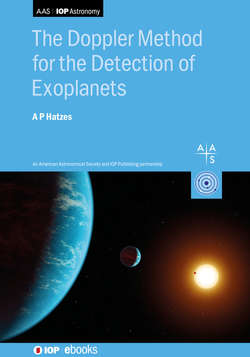Читать книгу The Doppler Method for the Detection of Exoplanets - Professor Artie Hatzes - Страница 48
На сайте Литреса книга снята с продажи.
3.2.3 Number Density of Spectral Lines
ОглавлениеThe Doppler precision not only depends on the wavelength of your spectrograph, but also on the number density of stellar absorption lines. The latter of course depends on the effective temperature of the star—hot stars have much fewer absorption features.
The left panel of Figure 3.10 shows the approximate number of strong spectral lines in the wavelength range 4000–7500 Å1 as a function of the effective temperature of the star. This is for main-sequence stars in the effective temperature range Teff = 3500–10,000 K. Here we define a “strong” line has having a depth deeper than 50% of the continuum value.
Figure 3.10. (Left) The number of strong lines (50% of the continuum) in the wavelength range 4000–7500 Å as a function of effective temperature, Teff, of the host star. The drop-off at lower temperatures is due to line blending at bluer wavelengths. (Right) The scale factor, F, in the RV uncertainty due to the line density as a function of Teff referenced to σ = 1 m s−1 at Teff = 5000 K. Over the temperature range 5000–10,000 K, this can be well fit by F=0.16e1.79(T/5000).
The number of spectral lines increases sharply as the effective temperature decreases, but surprisingly, this flattens out at cooler temperatures. The reason for this is that for wavelengths less than about 5000 Å, cool stars simply have too many spectral lines. Line blending suppresses the continuum, causing even strong lines to have a relatively small depth. The line blending also results in few clean, isolated lines which provide the higher Doppler information.
The right panel of Figure 3.10 shows the natural logarithm of the scaling factor for the RV uncertainty, F, as a function of effective temperature. Beyond a temperature of 5000 K, this follows a linear trend, so the scale factor for Teff<5000K can be well fit by the expression
F=0.16e1.79(Teff/5000).(3.6)
Therefore, a main-sequence star with Teff = 8000 K will have an RV uncertainty 2.8 times higher than a main-sequence star with Teff = 5000 K just from the decreased line density (same S/N and stellar rotational velocity).
